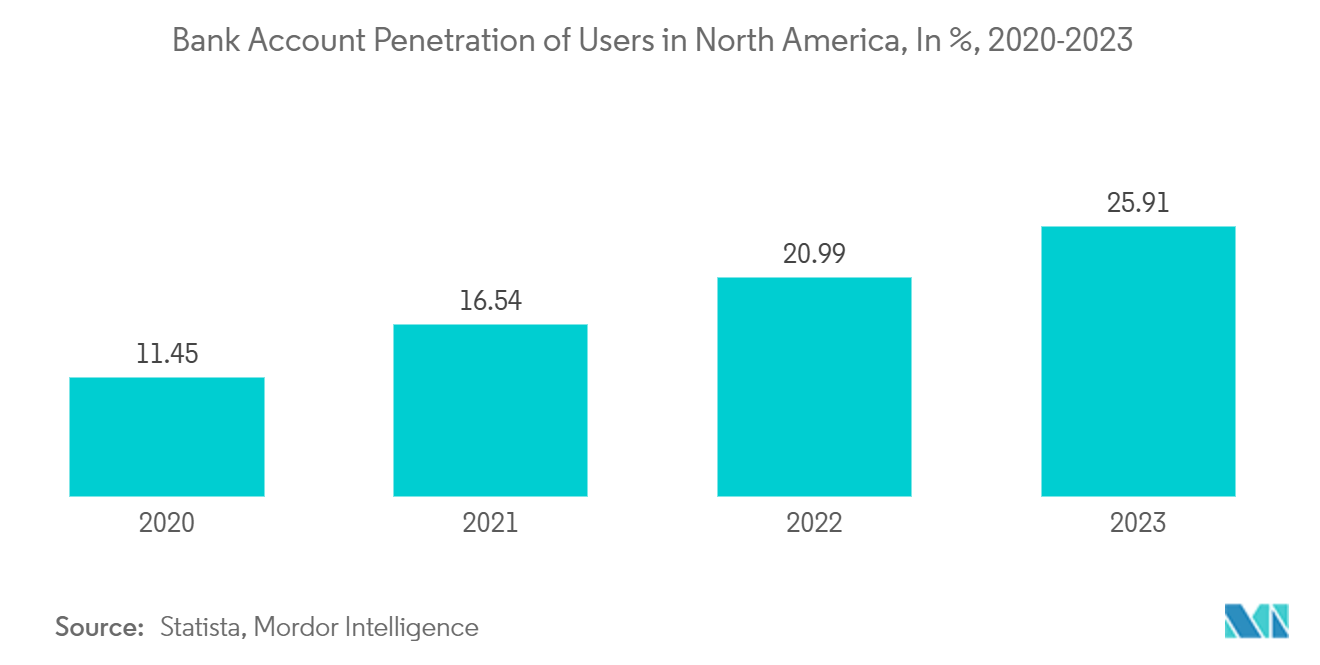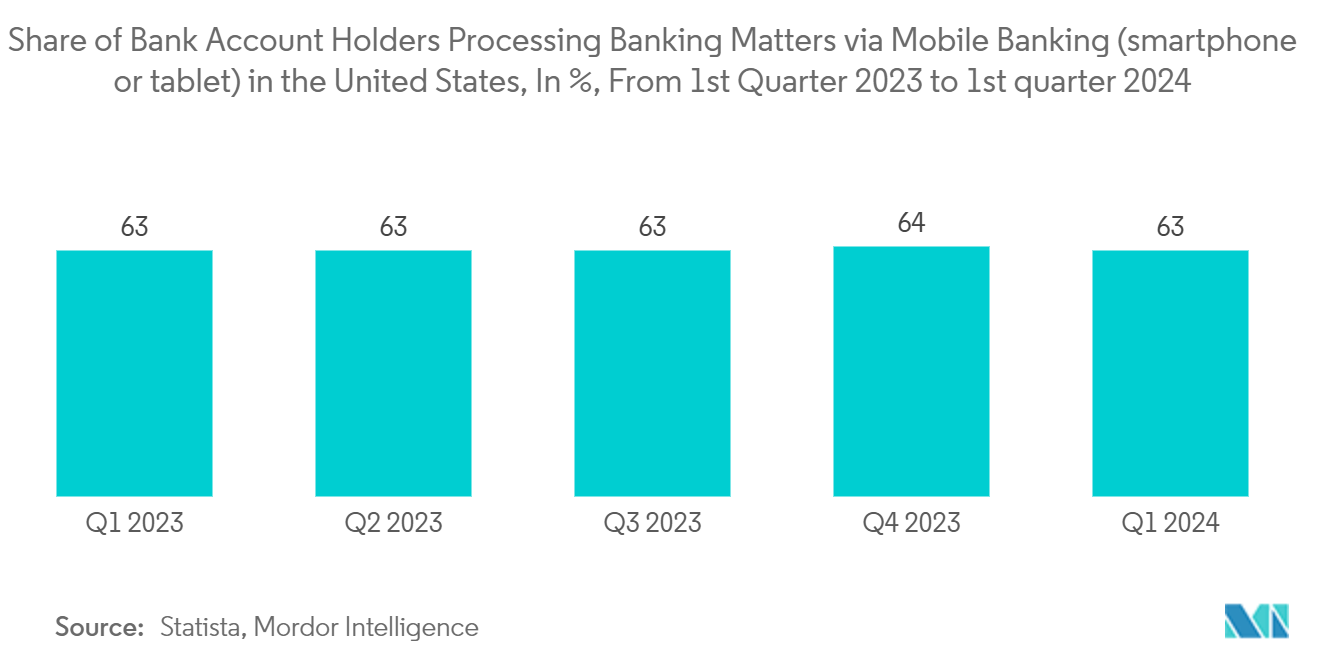Market Trends of US Commercial Banking Industry
Increased Digitalization in the Commercial Banking Market
Digital transformation is well underway in commercial banking, and IT leaders in this industry anticipate that the strategic value of digital innovation will grow significantly over the next couple of years. Although cash digitization and digital financial services have evolved to meet consumer needs, it can be difficult for some providers to keep up with the fluidity of digital commerce and fast-paced innovation. For instance, Citi launched CitiDirect, a new digital platform designed to meet the needs of its commercial banking clients. This initiative is part of a larger strategic investment strategy to meet the increasing global demands of these customers by providing a unified digital platform. The platform is available in the United States, with over two-thirds of the company's US client base utilizing it. The company planned to expand its reach to other markets in the latter part of 2023, including Hong Kong, Singapore, and the United Kingdom.

Increase in Usage of Open Banking in the United States
Open banking empowers consumers, offering them a wider array of options to bolster their financial well-being. It grants them enhanced access to swift, personalized digital platforms, aiding in monitoring expenses, adhering to budgets, and achieving financial milestones. The onset of open banking is timely amid heightened economic uncertainties. Driven by a rising demand for seamless services, the United States has swiftly embraced a cutting-edge open banking ecosystem. This approach enables financial institutions to harness consumer-approved financial data, delivering bespoke, adaptable, and innovative services. Unsurprisingly, this proposition has struck a chord with US consumers, with a staggering 87% actively engaging in open banking. These consumers routinely link their banks, investments, and loan accounts to a variety of financial apps, spanning payments, personal finance, and BNPL services. Notably, while payment applications lead the pack at 68%, bank apps closely follow, with 76% of consumers utilizing them for financial transactions.


